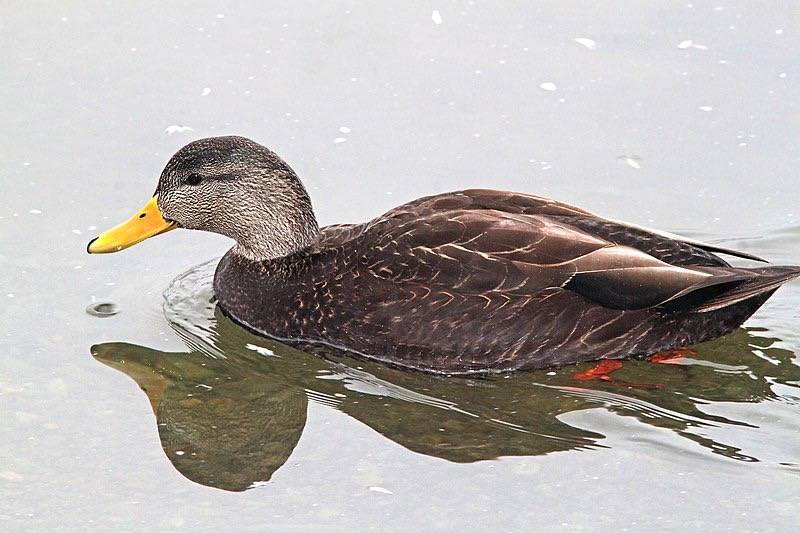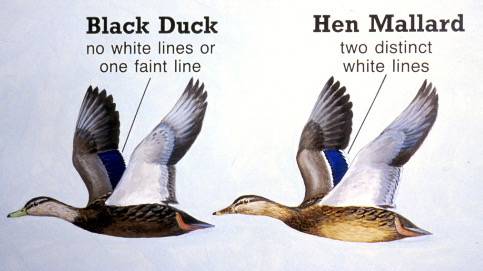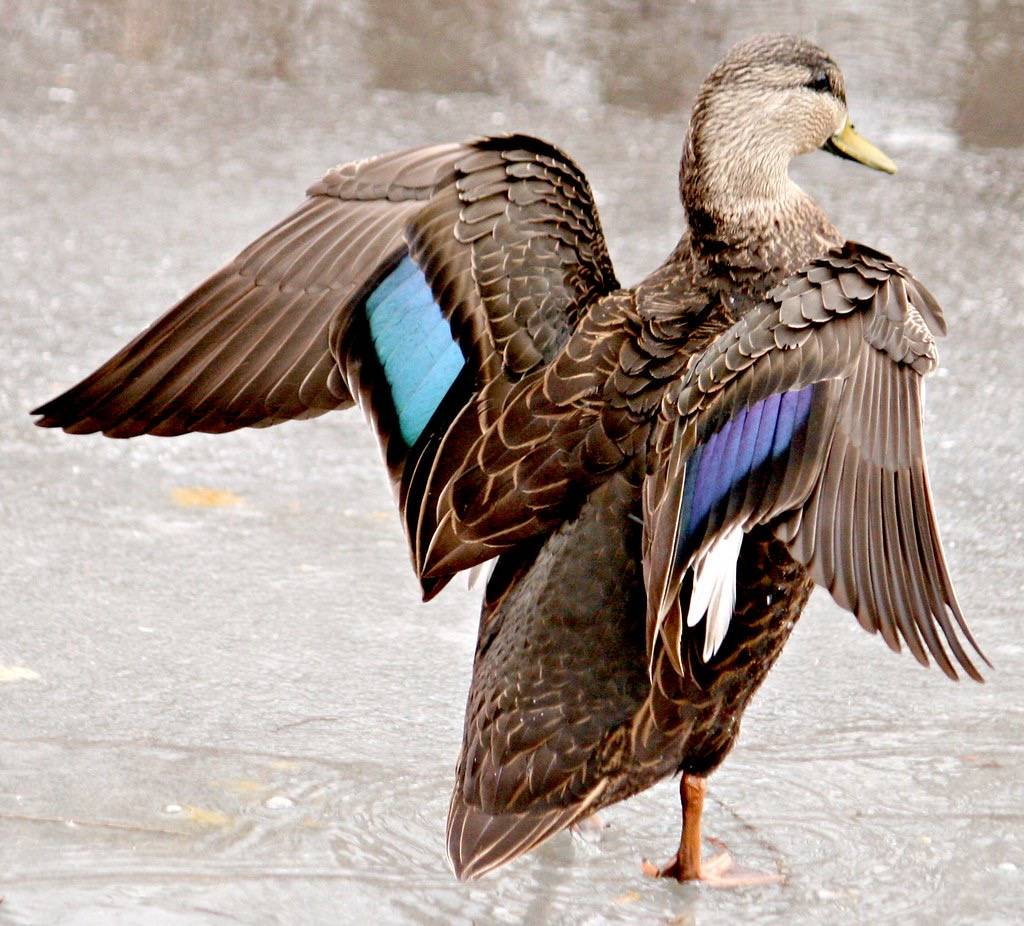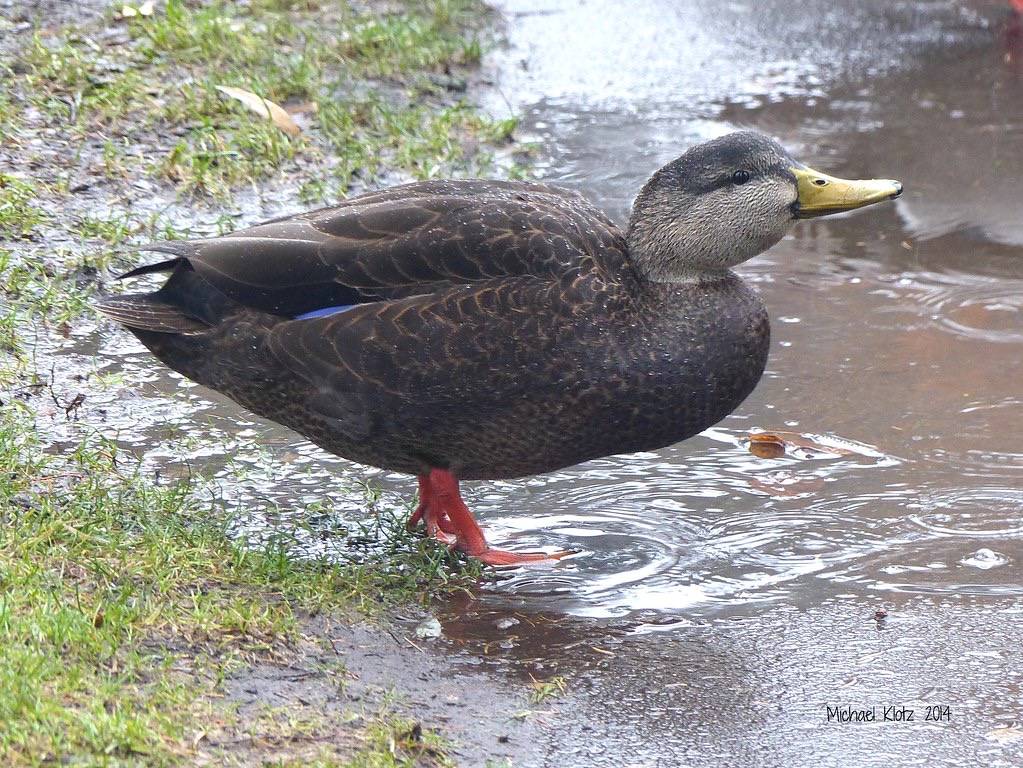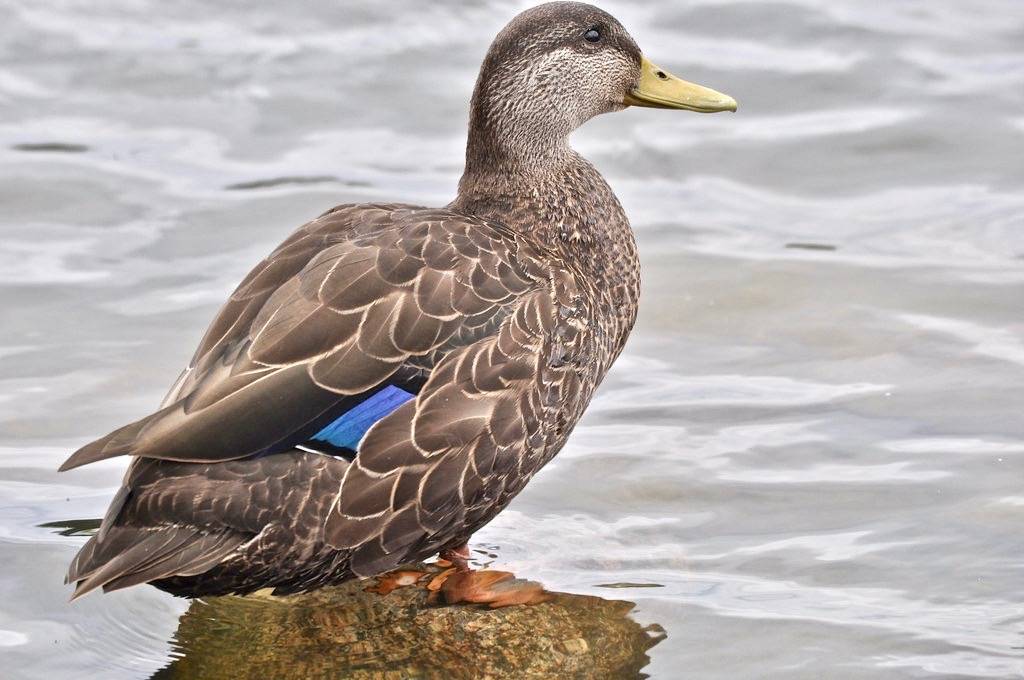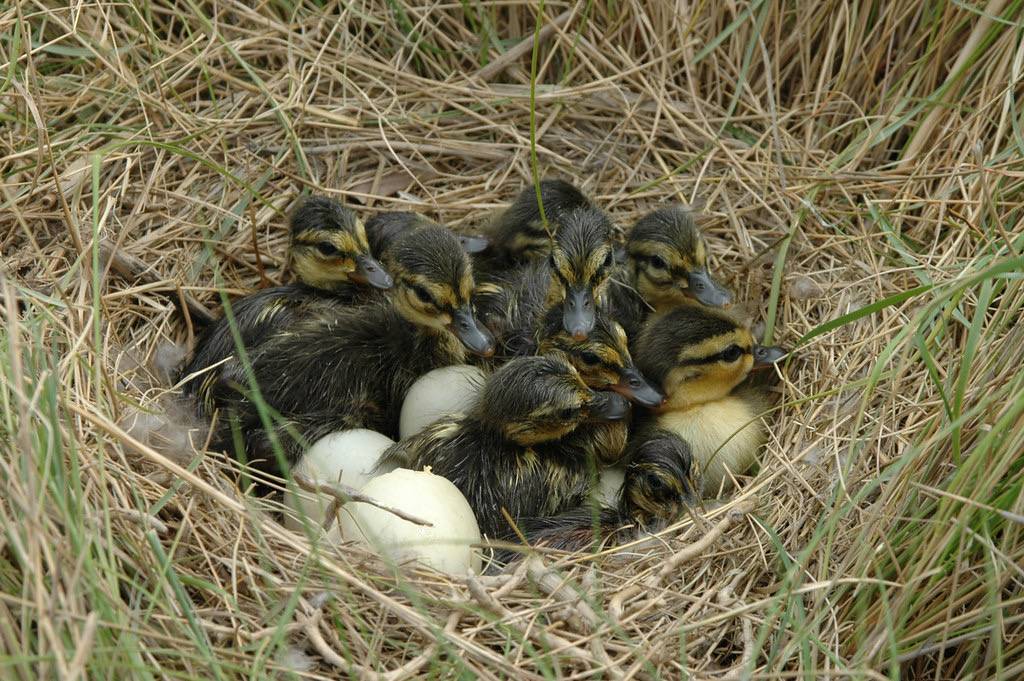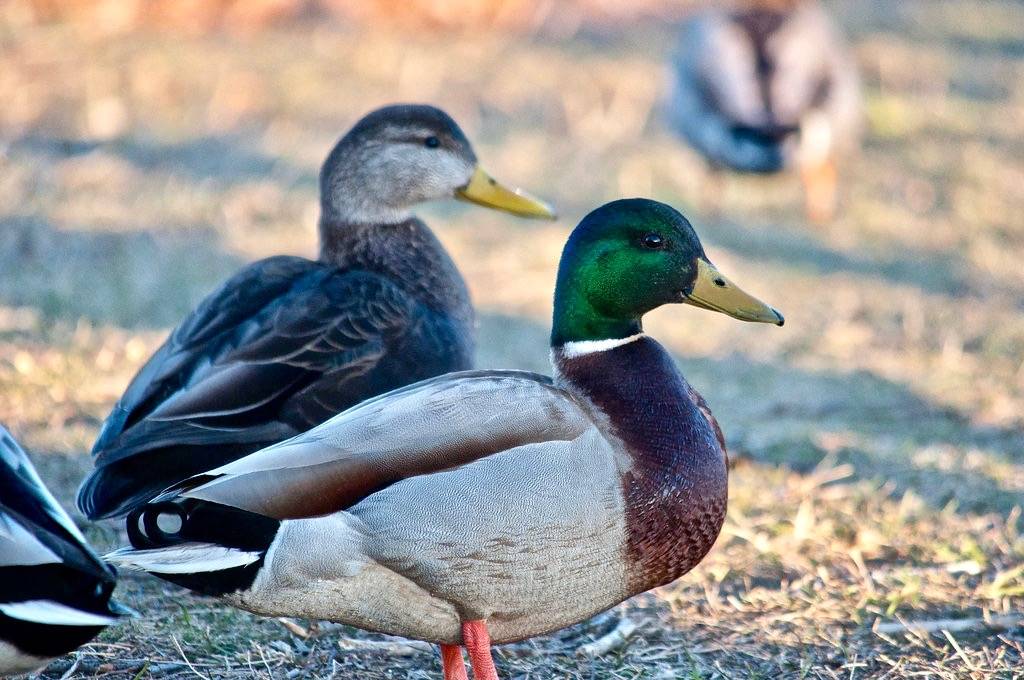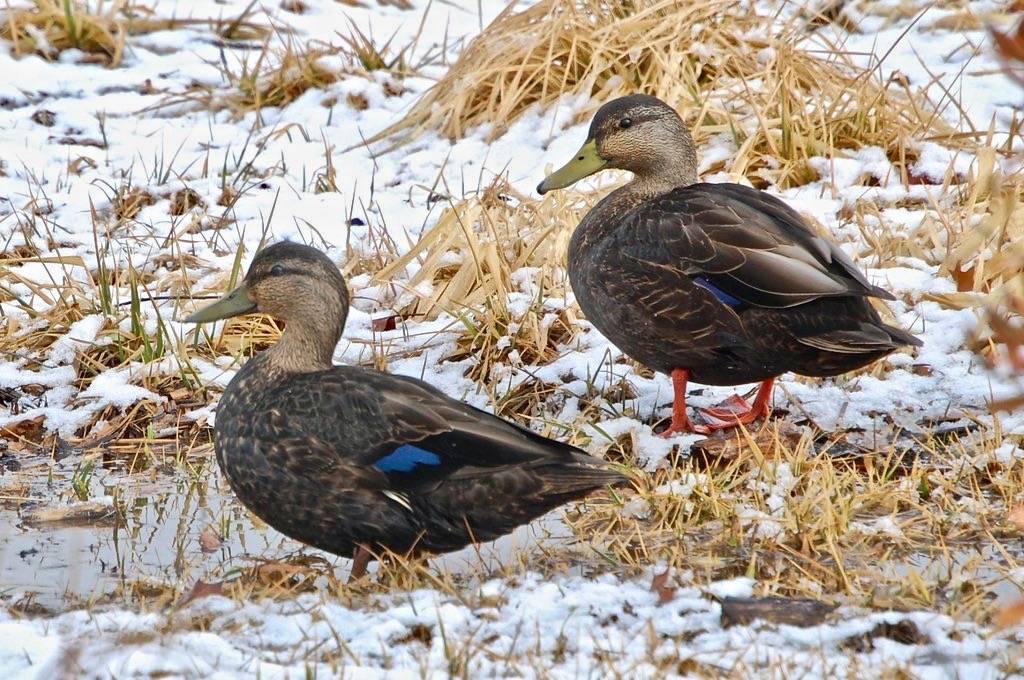American Black Duck
The American Black Duck is a year-round resident at some localities in Rhode Island but is only present at Salter Grove from November through March. Never occurring in large numbers, it forages in both North and South Coves close to shore, dabbling for plant matter like leaves, roots and seeds, but also clams, small crustaceans, mussels, and snails. Both the causeway and the Marsh Trail provide good vantage points for this species.
It is about the size of a Mallard and is easily overlooked especially when the two species raft together. Both sexes of the American Black Duck look like a darker version of a Mallard hen but have an olive-yellow bill instead of the bright yellow/orange bill of a Mallard drake, or the brown bill of a Mallard hen.
The Black Duck has a finely streaked head, and a neck that is lighter brown than the dark brown body. Both species have a blue speculum but that of the American Black Duck is not trimmed with white borders as in Mallards. In flight, the white wing lining of the black duck is in stark contrast to the dark body.
Numbers of this shy but common duck declined sharply in the mid-twentieth century. Hunting restrictions have helped to stabilize their numbers. However, habitat loss on its breeding grounds as well as along its migratory routes remains a problem


